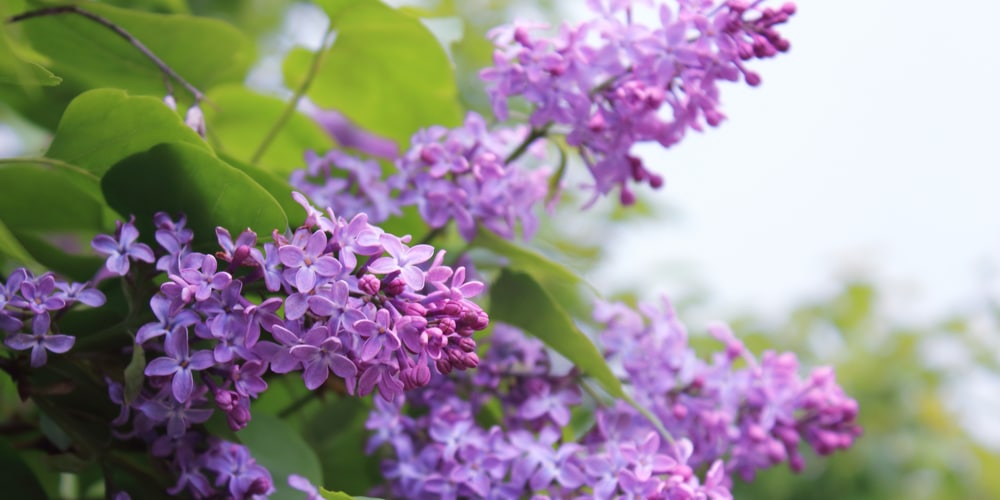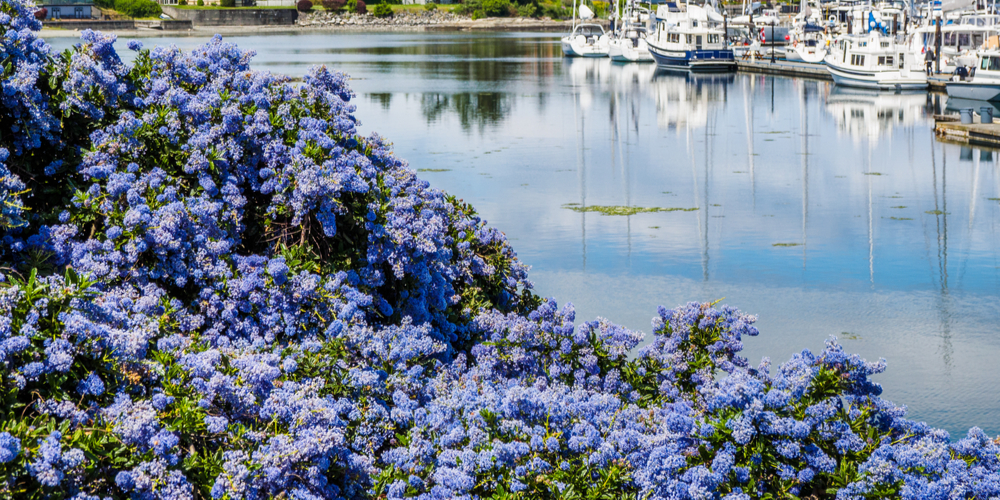Most lilacs are cold-hardy and get about 12 feet tall. If they were standing straight up, that is. But the blossoms tend to weigh each plant down. So, the foliage and flowers have the gorgeous effect of filling the whole area they occupy. Can lilacs grow in Zone 8?
Since the prevalent lilac zone 8 cultivar is a hybrid, the short answer is yes. Most lilacs prefer USDA zones 3-7, which is why plant breeders had to make hundreds of new varieties for warmer climates. Some lilac species are also available for gardeners with limited spaces, and each new variety has striking, unique features you will not find anywhere else.
See below for a list of which lilacs to plant in zone 8.
Lilac Trees That Can Be Grown In Zone 8
1 – Betsy Ross
The late Dr. Donald Egolf created this beautiful hybrid lilac, zone 8 enduring plant in the early 1970s, expressly for warmer climates. For clarity, its plant parents are Chinese Syringa oblata and unknown Syringa species found in New York.
Betsy Ross’s delicate smell immediately transports anyone back to being with their grandma in the garden. Or being outside in springtime. Then again, the snowy, white flowers bloom on old wood and thrive on neglect. This plant only needs well-drained soil with neutral pH levels of around 6.5 to 7.0.
Although other white lilac varieties exist, only the Betsy Ross cultivar grows well in zone 8. So, double-check not to get other selections the Syringa vulgaris “Beauty of Moscow,” which only survive in USDA zones 3-7.
2 – Josee
Syringa “Josee” is a compact, reblooming lilac with a delightful aroma that attracts many butterflies and bees. On top of that, its small, lavender-pink flowers spruce up your garden and home decor.
Most lilacs have a fleeting flowering season—only a couple of weeks. But this lilac, zone 8 cultivar blooms from spring to summer. In detail, it takes at least three years for a ruffled plumage of trumpet flowers to develop. Yet, an established plant just screams elegance. So, it is worth caring for and nurturing.
Usually, Josee plants grow straight up for about 4-5 feet. They look like another variety, called Bloomerang Dark Purple, but have slightly lighter flowers. But if you want a darker version, you can opt for the latter one.
3 – Miss Kim
The Korean lilac zone 8 tolerant (Syringa pubescens patula) is a dwarf version of the original Syringa shrub. For reference, this cultivar stays about 4-5 feet tall and can reach equal width. The fragrant flowers—which, unlike other cultivars, have a musky smell—are heat tolerant and have lavender-blue or soft pink petals, but the plant belongs to a slow-growing category.
This Syringa cultivar can take more than ten years to get up to 6 feet tall. Above all, it is a sun-loving shrub. It needs its morning sun to dry its foliage because short height can attract fungi that cause powdery mildew. In any case, having full sun till 2 or 3 PM would be better for the plant, which still needs to cool down in the evening.
You can plant lower, evergreen flowering shrubs around the base. Or prune it to create a thick border between you and the snooping neighbor. Still, this plant loses its leaves in the winter, and with that, you will lose some of that border protection.
4 – Monore
Know with the trademark name “Blue Skies,” this heat-tolerant cultivar can grow up to 10 feet. So, pruning it right after it blooms is highly recommendable. And as its trademark name suggests, the flowers are bluish and lavender purple.
When it comes to pruning this plant, it is better to prune it at the end of June. Mainly because if you prune it too late in the summer, you risk cutting off the flower beds for the following year. You can think of this variety as an improvement of the common purple lilac. After all, it has poofy flower clusters on it. But this lilac for zone 8 gardens does not require any special treatment.
The older Monore does not appreciate too much fertilizer. And sometimes, it lets old branches pile up down at the base, which you should remove after inspecting the others because it could be a sign of Witches’broom.
You may also like: Boxwood Companion Plants


